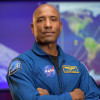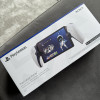Dawn probe reaches Ceres
Interview with
After a 7-and-a-half year journey, NASA's Dawn spacecraft is finally in orbit around the asteroid Ceres. Ceres is the largest of the bodies in the asteroid belt out beyond Mars, and scientists hope  it will be able to tell us something about how planets like the Earth were formed. Carolin Crawford is from the Institute of Astronomy in Cambridge and helped shed some light on the mission for Chris Smith...
it will be able to tell us something about how planets like the Earth were formed. Carolin Crawford is from the Institute of Astronomy in Cambridge and helped shed some light on the mission for Chris Smith...
Carolin - The asteroid belt is this enormous swarm of rocky, icy objects that live out between the orbits of Mars and Jupiter. So, you're talking about just over two to three times farther out from the Sun than Earth lies. They're basically debris. They're left over from the early stages of the formation of the solar system. They're kind of like chunks of a planet that failed to coalesce. There was supposed to be a planet between Mars and Jupiter, but you've got the gravity of Jupiter, kept stirring up all those rocks but they never got their act together. They never formed a planet. And so, they're of interest because they're telling us something about that early solar system.
Chris - So, if we study those rocky bodies, we learn something about the evolutionary history of how planets put themselves together 4.5 billion years ago.
Carolin - The thing about most of the asteroids is they're very small. They go down to tens of meters and there are just a few that are perhaps hundreds of kilometres across. If you have an object that size, it doesn't undergo all the sort of geological processing that the major planets that hasn't had tectonic plate processing, hasn't had all the kind of geochemical activity. So, most of the asteroids remain almost like pristine chunks of that very primitive material that went into the solar system. So, you were just talking about fossils. In a way asteroids are the fossils for our solar system and we look back at those and we can see what the ingredients were to make the planets we have today.
Chris - Ceres is something of an outlier then given that it's about a thousand kilometres across sitting in amongst this debris field.
Carolin - It's an interesting one and you may regard it more as a failed protoplanet. This is why it's interesting because it's got that - it's the bridge between those small pristine asteroids and the major planets, maybe this did get further along in the development and maybe it reached the protoplanet stage before it then failed to continue. Because it's that size, as you say, just under a thousand kilometres across is good enough gravity that it's pulled itself into a sphere, it's undergone some of that geological processing, it's undergone what we call differentiation. It has a core, it has a mantle it has a crust. And so, it's kind of gone somewhere along the way to being a planet but not quite.
Chris - Dawn didn't go straight to Ceres though, did it, because it took in Ceres's smaller sister, Vesta, on the way, a few years ago?
Carolin - That's right. Between 2011 and 2012, it spent a year in orbit around Vesta which is the next largest object in the asteroid belt. That's not big enough to really be a dwarf planet. But it still is a protoplanet. It's only just over 500 kilometres across and it forms an interesting contrast to Ceres. It's slightly closer into the sun than Ceres is. It's a less icy body. It's got a metallic core. One of the things that's fascinating to scientists about this whole mission is to be able to compare two so different protoplanets. Why is one a much more wet object? Ceres has got ice and rock whereas Vesta really doesn't. It's much more metallic and rock. What are the differences between the two planets? How can you count for them being more or less the same part of the solar system, but yet, having had quite different histories?
Chris - I know everyone is saying this week or so has just gone by - that Dawn has arrived at Ceres. But this is only really the beginning isn't it because now, it's got to establish itself in a much lower orbit than it is now in order to do this surface survey it's going to do.
Carolin - Well, we had some fantastic views of Ceres as it was approaching around about sort of mid-February. It effectively overshot the dwarf planet and then it's approached it from the dark side and as you say, it's got to manoeuvre itself into a closer orbit and get around to the sunlit side. So, we're not going to fantastic images probably for a few weeks now until the end of April. It's going to start out in orbit about 4,000 kilometres away and over the next year and a half, work spiralling closer and closer and so, it can then map the surface from down to about a few hundred kilometres away. And get more and more detail about those features that we're beginning to see.
Chris - And just very briefly, what is it actually going to be scrutinising the surface to see or how is it going to examine the surface?
Carolin - Well obviously, they're going to be taking images and spectroscopy of the light reflected from the surface. They'll be looking at the geology of the surface, but there also going to be sensing any variations in the gravitational response of the spacecraft from the dwarf planet as telling us something about the internal structure and help us to kind of dissect what the core is like. And also, whether there are possibilities that it does have a substantial fraction of ice or even possibly water underneath that crust.










Comments
Add a comment